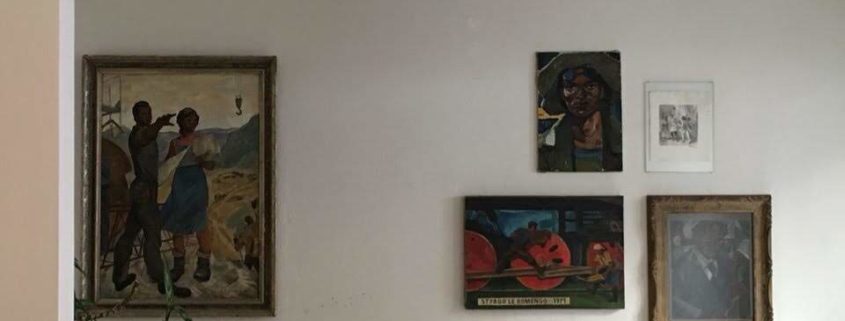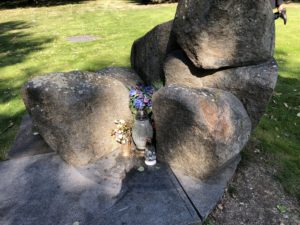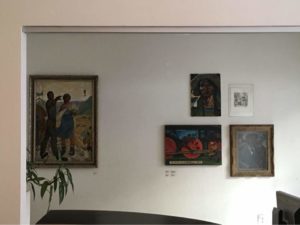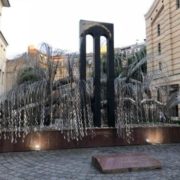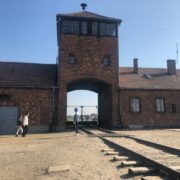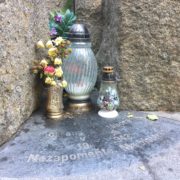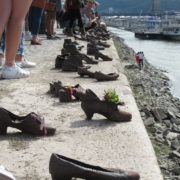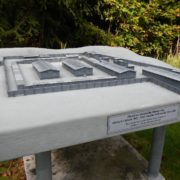Memorialization Through Romafuturism
By Tayla Myree
“We need a Malcolm X,” said Ladislava Gaziova, a Romani activist and one of the founders of Prague’s Romafuturism Library. She went on to describe the many acts of discrimination that the Romani people have had to face such as unequal access to education, unemployment, housing discrimination, colorism, and many other issues. Due to the plight of the Roma, they have suffered significantly from the times of the Hapsburg Empire, the Holocaust, and now under the illiberal democracies of Central Europe. As a result of their marginalization, many Romani live in poverty and are excluded from society. The only period of prosperity that the Romani have experienced according to Gaziova was under communism in the Czech Republic where they had equal access to education and employment, but that all ended after the fall of Czech communism in 1989. Despite these obstacles, Caziova, along with other Romani community members, founded the library of Romafuturism to empower the Romani community of the Czech Republic and to foster a more politically active environment for Roma.
Romani history has not been told from the point of view of Romani scholars, instead, their history has been written by a predominantly European lens. This has caused a negative outlook of Roma because many historical works describe them as uncivilized, unskilled, and lazy. This has created a plethora of negative stereotypes of the Romani people which continue to persist in the present day and contribute to the discrimination that they experience. These negative outlooks on the Romani population have also contributed to the overall apathy towards Romani suffering through the Holocaust. An estimated 200,000 – 500,000 Roma were murdered in death camps during the Holocaust leaving behind an extremely small population of Roma dispersed throughout Europe. These events are not emphasized by many Holocaust scholars, and many people are uneducated about the suffering of the Romani.
One of the key examples of apathy towards the memorization of Romani people during the Holocaust is the highly contested memorial for Roma who suffered at the Lety Concentration Camp in the Czech Republic. You would most likely be unable to find this memorial unless you were actively searching for Roma memorialization sites. This site of memory has been debated for the last 20 years due to the existence of a pig farm on its grounds, only recently removed due to public pressure. Many activists found it highly disrespectful that there was no Roma memorial on the land of the previous concentration camp, and that the government should take initiative to remove the pig farm that existed. The Czech government was extremely hesitant about establishing a memorial for the Romani at Lety due to their fear of admitting complicity with the Nazi regime in its mission to exterminate Roma during World War II. The rise of right-wing groups and parties in the Czech Republic also did not make the transition from pig-farm to memorial any easier. After great and consistent pushes from activists and NGOs, there was finally an agreement to remove the pig farm in 2017 and a Romani memorial was erected and is currently continuing to expand on the site.
The memorial is in the countryside of the Czech Republic, about an hour and a half away from Prague. Once you arrive at the memorial site you are greeted by what looks like a normal recreation area, but the actual memorial is somewhat hidden and can only be found if you walk for a short time into the park. The memorial itself is a group of compiled stones and a plaque is written in Czech (not translated into any other languages) that reads “never forget”. Luckily, I was on a guided tour and was given a clear history of the Romani Holocaust and why this memorial was erected, but if I was not a part of an academic program, I would most likely see this memorial as just a pile of stones. This memorial is extremely inaccessible to the everyday tourist because it is outside of the main Czech tourist destination. Lack of knowledge of the persecution of the Romani during the Holocaust may also contribute to lack of visitors to the site.
Due to this lack of memorialization from European societies, it is important for Romani communities to create their own spaces of identity and political action, which is why Prague’s Romafuturism library is extremely important. The library is a space where Romani people can reimagine their futures and tell their own stories from the past through mediums such as literature, music, and art. The Romafuturism library is heavily influenced by Afrofuturism, a practice in which Black Americans re-envision their history within the African diaspora through science fiction, historical fiction, and magical realism. According to Ladislava Gaziova, many Roma identify with the lived experience of Black Americans due to the discrimination that they have faced within the United States. Similar to Black Americans Roma have experienced the history of slavery, restricted mobility, segregation, and face similar contemporary issues such as unequal access to education and racial profiling. Gaziova believes that Roma must go through a civil rights movement of their own and need a fearless leader like Malcolm X so that they can have equal rights throughout Europe. She explained that the Romani community is not very politically active, and she hopes to encourage more to participate in political action. As a result of increased political participation, Gaziova hopes that the Romani identity will become a part of the national Czech identity.
The library also serves as a space to provide educational assistance to the Romani community. Many Romani children are purposely placed in schools for students with learning disabilities and are consistently segregated in both public and private schools. This has led to low literacy rates within the Romani community and has resulted in very low attendance and acceptance of Roma to universities. In addition, Romani history and culture is not a part of the curriculum in public or private education. The educational programming that the library provides is essential because it gives members of the Romani community access to learning about themselves and the world around them.
The library contains works by both Romani and Black American authors such as By the Way by Tom Oddley and Black Panther by Emory Douglas. The library also holds different events and discussions, including a lecture series on the Afro-American struggle for equality. The library is open to the public and people are encouraged to visit and learn more about Romani history and struggle. Gaziova hopes to move the library to the outskirts of Prague soon so that more Romani can visit the library since many Romani reside on the outskirts of the city. The reclamation of Roma identity through Romafuturism along with inspiration from Black history and Black struggle is a part of a larger movement of marginalized minorities around the world reclaiming their identities in creative ways that is strong and unstoppable.
To learn more about Prague’s Romafuturism library please visit www.romafuturismo.org.

